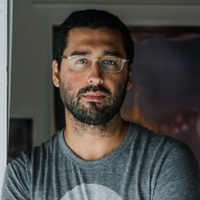On making work in new surroundings
Prelude
Cory Arcangel is a composer, artist, and entrepreneur. After having lived in New York for 15 years, Arcangel moved to Stavanger, Norway where he works by telecommuting to his studio in Brooklyn, which he still maintains. Since moving, he has worked on a dizzying array of projects; In collaboration with Olia Lialina, he recently toured the two-person show, “Asymmetrical Response” which traveled to the Western Front in Vancouver, the Kitchen in New York, and Art Projects Ibiza in Ibiza; Under the auspices of Arcangel Surfware—a software and merchandise publishing company he founded—he published Tony Conrad’s 200-plus-hour-long piano piece, Music and the Mind of the World in 2017, released a line of fidget spinners, as well as opened a flagship store and gallery in Stavanger in 2018, where he can be found working on Saturdays. His work is included in many public collections, including the MoMA in New York, the Tate in London, Berlin’s Neue Nationalgalerie, and the Migros Museum für Gegenwartskunst in Zürich.
Conversation
On making work in new surroundings
Visual artist Cory Arcangel discusses leaving NYC and moving to Norway, the change in process and perspective that results from having a child, and how he will always be just a media artist from Buffalo.
You moved to Norway about the same time you became a father. How have these changes influenced the way you work?
The move was sudden. It just kind of happened. My wife and I didn’t telegraph it far in advance; we just picked up and left one day. It’s hard to understand how it’s affecting what I do, because so many things changed at once that I don’t have any kind of reference point.
Norway is incredible because—at least where I live in southwestern coastal Norway—it was fairly remote up until the ’70s. And, because of the landscape of Norway, the fjords, these towns that are quite close by in terms of how the crow flies, are actually very far apart by any other way. So, for example, Norway has hundreds of dialects. Not only different accents, but different words.
Since it is so remote, its culture is European, but it’s actually one of the places in Europe that is at the farthest end of European culture, which has been the thing that’s been blowing my mind the most. It’s so different, not just from America, but from Europe even. Just little things like how people talk to each other, and how they relate.
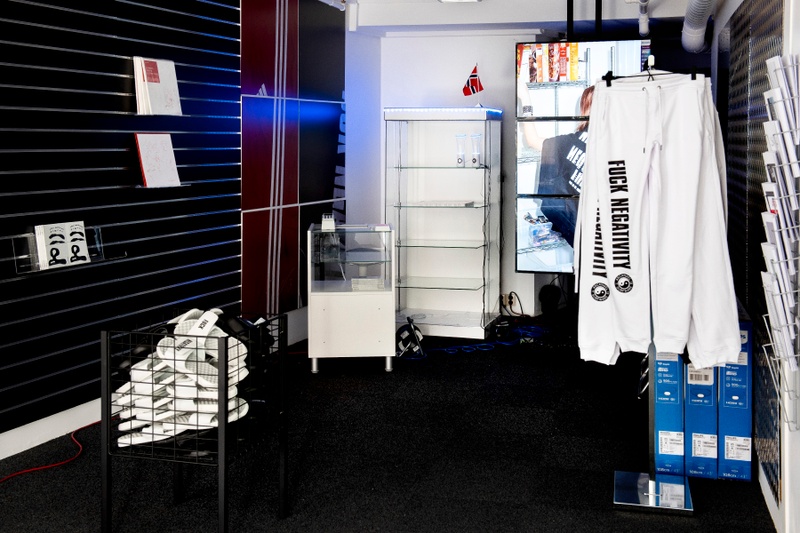
You decided to open a gallery in Norway, too. Why?
Yeah, it’s a store and gallery. I opened it for a bunch of different reasons. I live in Stavanger, which is the oil capital of Norway. It’s where all the oil-manufacturing is done. After 2014, there was an economic crash here, because the price of the oil just halved. That loosened up a lot of stuff in Stavanger—mainly, a lot of real estate became available for relatively cheap. That was one reason.
Two, the architecture is really unique to this place. Before it was an oil town, it was an industrial fishing town. So there are tons and tons of these old canning factories. Stavanger had 250 sardine factories at a certain point. And like most New Yorkers, I have an unhealthy fixation on real estate. So for years, every time I passed an empty canning factory in Stavanger, I would find myself day dreaming about opening a space. And one day, I walked past a nice space in a former canning factory in my neighborhood, the landlord was there, and that was that.
The third reason was I wanted a reason to be social. It’s not the most casually social culture, especially in western Norway. I don’t know if you’ve had much contact with Scandinavians. They’re very quiet.
Also, of course, I had the publishing and merch enterprise Arcangel Surfware already, and what’s a brand without a brick-and-mortar flagship?
What’s the name of the store?
Arcangel Surfware Flagship. And the gallery which is in the store is called Flagship AS, which is just a play on “AS” which is the Norwegian word for incorporated.
Do you have a separate studio space, or do you make art within the store?
It’s even more complicated than that. I left my studio in New York running. So, my studio is in New York, which is in Sunset Park, and I just have a little office with a desk here in Norway. So I work alone and Slack to my studio. We video conference a few times a week. We have a totally tripped-out, completely mirrored setup. So my hard drive that I’m working on is mirrored in real time to the hard drive at the office. When I save a file, it automatically updates on their end. So actually, we’re kind of working on the same 24TB computer.
It’s only been two or three years of my life that I actually had a studio that I was at. Before that, I had no studio and everything was produced and then mailed to the gallery. So actually, it’s just the way I have almost always worked.
Do you like being alone? Do you miss being in the same room as everyone?
I definitely miss it. I love to be in the office, gossiping, etc, etc. I love that kinda stuff.
What sort of challenges have you found opening up this gallery in the store? Does it get in the way of making your work?
Well, the space is only open on Saturday from 12-3 and it’s usually just me and my daughter playing. It’s at the farthest end of Stavanger, which means we don’t get so much foot traffic. It’s designed to be a destination. And in a way it is actually like an “open studio,” meaning that the actual store itself and the products and the designs are all things that I’m working on in my normal artwork. They don’t present themselves as artwork in the store, but they’re all tests and one-offs and things from the printer. It’s a kind of halfway house, or purgatory, for my ideas. I’ll be working on something and I’ll put it in the shop and then it’s a way for me to see how people react to it, just to see how it works in a space.
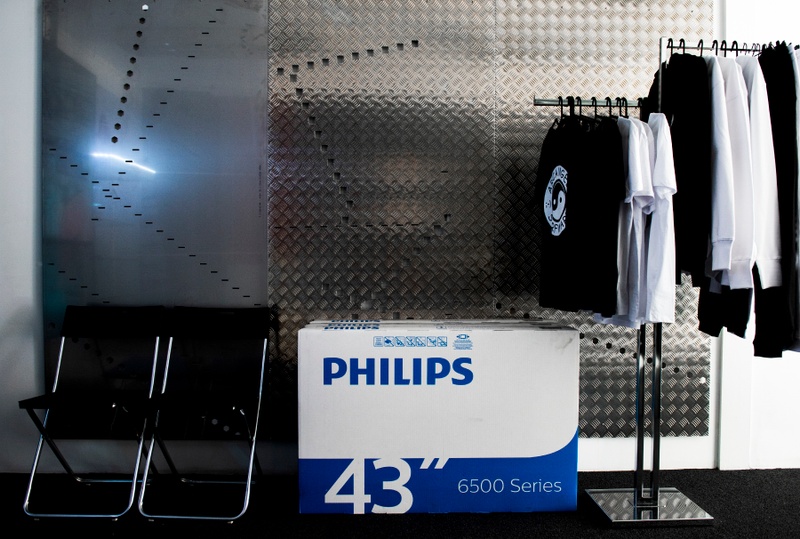
It’s been super helpful for like a thousand different reasons. And the gallery has also been a way for me to see other people’s work and to learn about it. Also to re-think really basic things, like: What is contemporary art? And what does it mean to show it?
If you were still in New York, would the idea of opening something like this occur to you?
I would never have done it in New York. I wouldn’t have had the desire. I don’t think New York needs another store, especially my store, or even another gallery. But in Stavanger, I felt like, “Why not?” When else am I ever going to do something in a canning factory? Also, it gives a reason for people to visit. I would explain it like it was just served up to me in a way. You know what I mean? And that’s often how things can happen sometimes when you’re lucky.
Depending on the time of year, the time when the sun rises and sets is more extreme in Norway than in New York. Has that affected your work at all?
Yeah, a lot. That, and also having my daughter. With the Norwegian schedule, especially the southwestern Norwegian schedule, work starts at 8:00. And they eat four meals a day here and not three. So that takes a ton of learning. They eat breakfast. Then their lunch is super early. We would call it a snack, but they call it lunch. Then they have a super early farmer dinner at 4:00. And then they have something called night food at 8:00. That kind of thing takes so long to learn when you’re an immigrant.
When I first moved to Norway, before I lived there full-time, I was always just like, “Why are people leaving work, now? What’s going on?” And, of course, with the sun, it’s like living on Mars. The sun travels in a totally different arc in the sky, so your body never knows what time it is, and it’s not only related to how light or dark it is. It’s just like, “Why is the sun over there? I have no idea.”
It took me probably three years to get used to it. This is what a child would learn. When you grow up there, you don’t even know that you’re learning it. But it took me three years to just figure out, “Oh it’s 11:00 or 11:30, it’s time for lunch.”
I was recently talking a friend who’s an artist, and he was saying that when his daughter became a teenager, suddenly he was like, “Alright, I can do massive projects again.” Do you find that now that your daughter is three, and maybe able to do a bit more on her own, that your work is slowly shifting, too?
Right now, I’m just pressing down on the pedal a little bit again. And I’m like, “I hope this goes okay.” Being a father shifts perspective on all that kind of stuff, which is fun in a way because that stuff is just art; it’s just make-believe fantasy stuff. It shouldn’t be that tense.
Has it felt like starting over again?
Yes. It’s like everything else. It`s always worse before you jump. It’s been liberating to let things go, especially all the things that I’m not really good at. And the Scandinavians are such chill people. They’re very talented, and really understated.
It’s the opposite of New York in a way. In New York, there’s a focus on money or success. It’s what a lot of culture is built on, and all arrows are pointing in those directions. In Norway, and in Scandinavia as a whole, everything is built for family life.
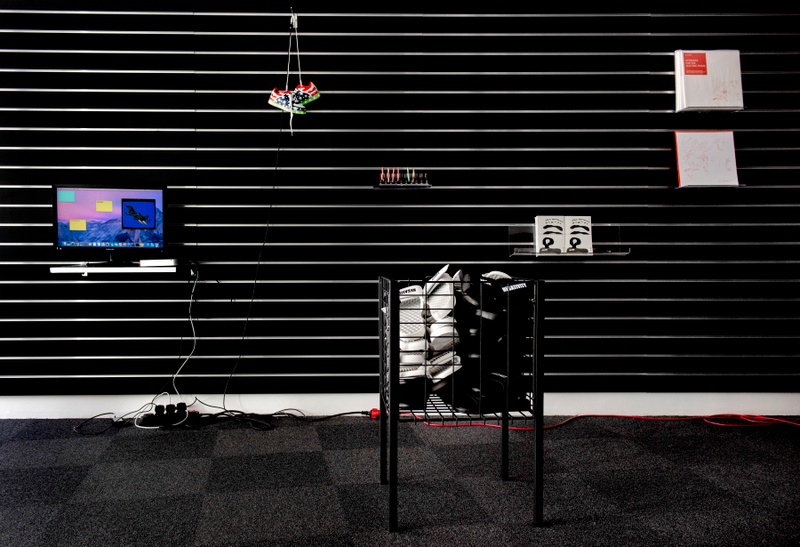
I remember you were working on that massive 200+-hour Tony Conrad piano piece when your daughter was first born, and you were still new to Norway.
Yeah, that was wild. I did a couple of projects during that period that kept me floating in a way. Those were my lifelines. They were working with friends basically. Like the Tony thing, we had started it and then my daughter was born, and it was mainly an excuse to talk to Tony on Skype every two weeks. And it turned out to be so fun because, as you know, he was so hilarious to work with. When Tony passed, we took a year off, and then we did the launch the week of his memorial.
I did another collaboration with Olia Lialina, which was a two-person traveling show. We did that around the same time. My life had totally become a chaotic mess, but those were a couple of things that kept my head above water. It was basically working with friends that helped me stay upright. Previously, it was my life that kept my work grounded, but after moving, it was my work that kept my life grounded.
Now that you have a child, do you do end up using your time more efficiently?
Absolutely. Everything is so efficient. I have time windows now. I’ll just need five to seventeen minutes free. I can put on my headphones and I can really dive into any work and then come out of it. I had never turned off my work brain ever in my life since I was a kid, so I had to learn how to turn it off, which was a lot harder than it sounds. It’s something I never thought I’d do. Because when you’re with your child, you just can’t be screwing around in your mind.
Do you miss being part of a bigger art scene, like in NYC or L.A.?
Yes, but I don’t have much time to think about it. Also, things changed a lot, so that’s been the most interesting thing, coming back and seeing how different New York is. I mean, in three years, there are parts of New York that are unrecognizable now, which is something New York has always done, but it’s fun for me to finally experience that effect. The city has changed without me. I’m no longer a part of it and it’s super mind-bending.
You’re from Buffalo. I know New York is where you were living and making work, but do you identify as a Buffalo artist? There seem to be parallels with Norway.
Yeah, I think about that all the time. The weather where I live in Stavanger is super harsh. It rains all the time. It does remind me a lot of Buffalo. A kind of industrial city that was placed there because of its industry.
The people have this really interesting relationship to the weather. People love a snowstorm in Buffalo, because it gets everyone excited. In Stavanger, there is something similar with rain and windstorms. But the rain, they don’t even know that it’s raining. Similar to Buffalo, like it snows, you shovel and you go.
The last time I was back in Buffalo, I was doing a lecture in Tony [Conrad]’s class and it was the second coldest day in like a hundred years. It was crazy. It was colder than it would ever have been when I was kid there. You would go outside and you just started laughing at how absurdly cold it was. It was crazy. It made me remember once when I was a kid getting up in the morning, the dashboard of my father’s car had cracked in half because it was so cold. My god. Can you believe it?
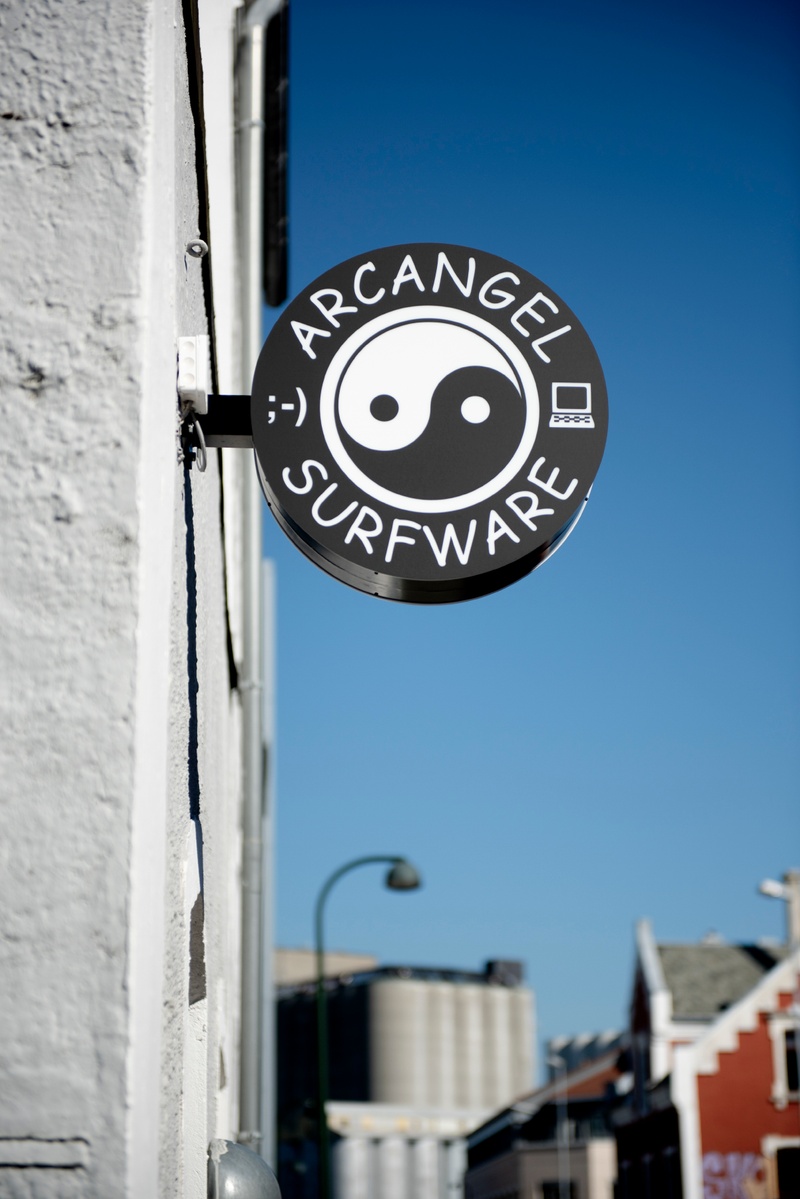
Do you think growing up in Buffalo under those conditions affected the kind of art you make?
Oh yeah. I’m inside, in front of a computer at all times, basically. Definitely. I am a Buffalo media artist. I mean I learned what art was because of that city, because of Squeaky Wheel and because of the way that people, like Tony and all those people that shaped the city influenced me. My art is very specific to Buffalo. I’m an absolutely cookie-cutter Buffalo product.
Do you think that you’ve come in this full circle where you grew up in Buffalo and now you’re in Norway, you’re raising a child in this similar climate and space?
Yeah, it’s spooky. I never thought I’d leave New York. I love New York. I was like, “This is it, this is my place.” Now I’m just like, “Whoa, what happened?” But I like it. I walk along a fjord to get my morning cup of coffee. I can’t complain!
Conditions report at the time of this interview:
| Symbol: | Weather: | Music: | Location: | Emotion: |
 |
Sleet | Norrit - Tuff Turf Rough Stuff | Heathrow | Premium Economy |
Cory Arcangel recommends:
A few thoughts on music from S/W Norway:
-
Softcore untd. - I was in Bergen for one night last year, and decided to walk over to Østre. Turns out, Softcore untd. was playing. The whole thing blew my dome. Id never seen anything like it - I couldn’t figure out if it was club music, an indie band, or hip-hop. And why were all the kids in the audience wearing Patagonia (turn out Im old, and had no idea that was the new style).
-
Charlie Skien - A related project to Softcore untd. So great. Bergen rap FTW!
-
Icy Arn - If u r 15 and live in Stavanger (or Bella Hadid), Icy Arn - still in high school in Stavanger!-iz THE MAN. Also check out 50k emails
-
Tarjei Nygård - One of the many incredible things about living in Norway, is that they take their contemporary dance music - commonly referred to outside of Norway as space disco - seriously. Like really seriously. Ive been lucky to learn the history - from Erot on to Todd Terje - from Tarjei Nygård who holds it down every month at Stavanger club, Cementen. Don’t sleep on Lost In Lindos, Nygård`s latest release on Esp Institute.
-
Lindstrøm - Raised on outskirts of Stavanger, and thus locally known affectionately as “The Prince of Randaberg” (a cultural translation to NYC would be something like “The Price of Long Island”) Lindstrom makes loopy shepard tone style tracks I could listen to on repeat forever.
- Name
- Cory Arcangel
- Vocation
- Visual artist
Some things
Pagination
